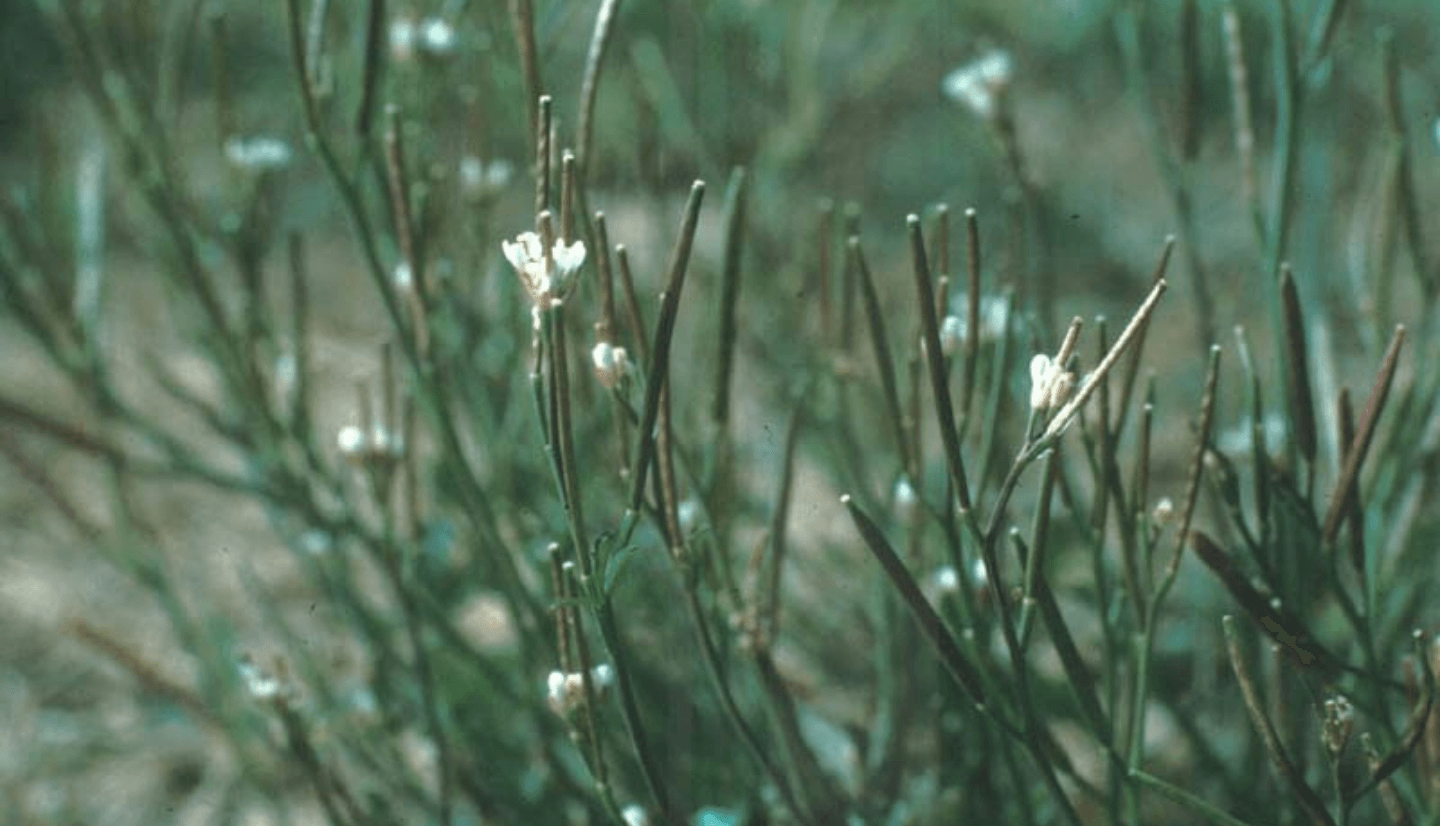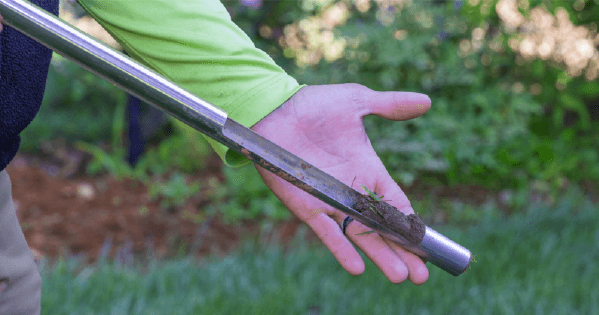Bitter Toward Bittercress?

Bittercress can be enjoyable in a salad or as a garnish, but not in your Georgia lawn or garden. Known as a spice and for its peppery flavor, Bittercress is favored for consumption when harvested from organic growth settings such as forests. Being part of the mustard family gave it the “bitter” in Bittercress. But this greenery turns homeowners sour when it invades their lawns, gardens and potted plants. They consider it a bitter nuisance and want nothing more than to get rid of it.
What is Bittercress?
Bittercress is a fast-growing, annual, or biannual, plant belonging to the mustard family, which also includes favorite vegetables like broccoli and cabbage. It commonly is not grown for consumption, rather, because of its prolific seed production it is considered an invader. Bittercress can be challenging to control because its seeds can explosively eject several feet when the seed pods mature, allowing the weed to spread rapidly. Gardeners often try to manage bittercress through manual removal or other control methods, which can include chemicals. Therefore, it is not safe to consume when herbicides and other chemical controls have been applied.
What Does Bittercress Look Like?
Bittercress typically has compound leaves with small-toothed leaflets. It produces tiny, white flowers with four petals arranged in loose clusters. Size can be just a few inches to over a foot tall. Its stems are slender. Perhaps one of the most distinctive features of Bittercress is its seed pods. As the seeds mature, the pods explode when touched, sending the seeds several feet away embedding itself in the soil for new growth. Bittercress plants often have a delicate and somewhat lacy appearance. The leaves and stems may have fine hairs. Keep in mind that the appearance can vary slightly between species, and different environmental conditions can influence how it looks.
Why is it a problem for my lawn?
Bittercress likes a moist habitat. It grows best in lawns and gardens where turf and soil are often disturbed by mowing and play. Seeds can be dispersed through hands, shoes, and clothing.
Bittercress can be considered a problem for lawns for several reasons:
- Rapid Growth: Bittercress is known for its fast growth as described above. It can quickly outcompete desirable grass species.
- Competitive with Grass: Bittercress competes with grass for nutrients, water, and sunlight. As it establishes itself in the lawn, it can negatively impact the growth and health of the grass.
- Aesthetic Concerns: Bittercress may not have the same visual appeal as a well-maintained lawn. Its presence can detract from the overall appearance of the lawn, especially when it grows in patches or displaces desirable plants.
How can I prevent Bittercress from taking over?
Preventing bittercress from taking over your lawn involves a combination of proactive measures and good lawn care practices. Here are some strategies to help you control and prevent the spread of bittercress:
- Maintain a Healthy Lawn:
- Proper Mowing: Mow at the recommended height for your grass type. Mowing at the right height helps promote healthy grass and reduces opportunities for weeds like Bittercress to establish themselves.
- Water Regularly: Ensure your lawn receives adequate and consistent watering—deeply and infrequently as compared to lightly and often. Remember that Bittercress likes a moist environment.
- Fertilize Appropriately: Use a balanced fertilizer according to the needs of your grass type. Proper fertilization encourages strong, vigorous grass growth, making it more resistant to weed invasion.
- Seed Bare Patches: Promptly address any bare patches in your lawn by overseeding. Dense grass cover helps minimize opportunities for weeds to take hold.
- Mulch Garden Beds: Apply a layer of mulch to garden beds to suppress weed growth. Mulch regulates temperature and reduces the likelihood of weed establishment.
- Regular Inspection and Prompt Removal: inspect your lawn for early signs of Bittercress. Promptly remove the plants before they produce seeds. Hand-pulling is effective for small infestations.
Pre-emergent Herbicides: Consider using pre-emergent herbicides in early spring to prevent Bittercress seeds from germinating. These herbicides create a barrier in the soil that inhibits weed seedlings from emerging.
What if Bittercress Has Taken Over?
Post-emergent Herbicides: If Bittercress is already present, selective post-emergent herbicides designed for broadleaf weed control can be applied. Contact your lawn care professional for the proper treatment and application.
Cultural practices such as aeration can improve soil drainage and reduce compaction, which makes conditions less favorable for weed growth. Adjusting irrigation practices to avoid over-watering is essential.
Always be mindful of seeds. Be cautious when handling mature bittercress plants to prevent the dispersal of seeds to new areas.
By combining these strategies, you can create an environment that is less conducive to bittercress growth and promote the health of your lawn. Consistency and vigilance are key in weed prevention and control.
Simply Green Can Help!
Simply Green Lawn Care Plus is dedicated to creating healthy lawns and landscapes for the Georgia homeowner. Technicians are trained to identify problems such as pests, weeds, and lawn diseases and to offer solutions. Contact Simply Green today to schedule a visit from one of our experts.
About Simply Green Lawn Care

Simply Green aims to provide the highest quality lawn care, mosquito control, and lawn pest control services to Georgia residents.
We are locally owned and operated which allows us to be accessible, attentive, and responsive for customers in Georgia.
Our well-trained team is easy to work with and determined to exceed expectations.
All our plant health care specialists are Georgia Department of Agriculture Certified and maintain their Category 24 applicators license.


